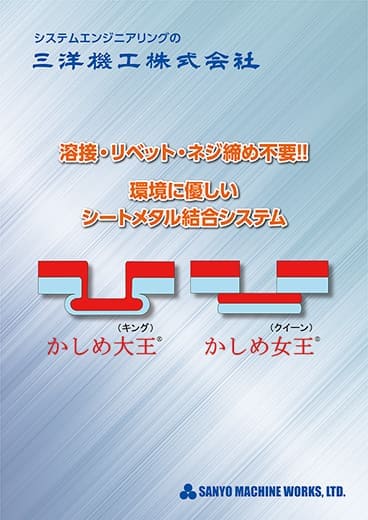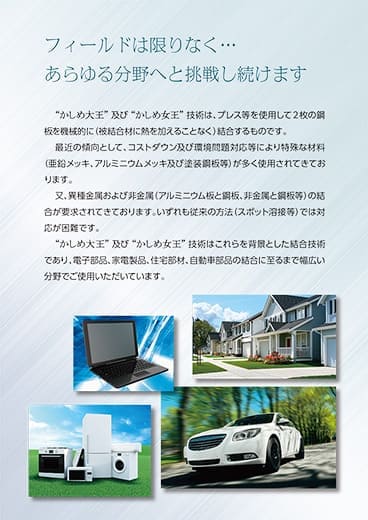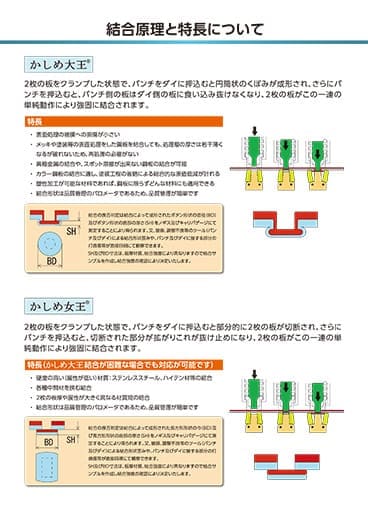- Top
- Products & Technologies
- Joining Systems
Joining Systems
Our mechanical joining system is excellent for joining sheets of different metal and coated steel(painted, galvanized, etc.). This new technology was born from the assembly process of automobile panels and now is used for various home electrical appliances, electric and electronic components, and housing materials, etc.
Kashime King®
With the two plates clamped together, the punch is pushed into the die to form a cylindrical indentation, and when the punch is pushed further in, the plate on the punch side bites into the plate on the die side, making it impossible to pull out. The two plates are firmly joined through this series of simple movements.
Features
- Minimizes damage
- Compared to conventional methods such as spot welding, damage to the surface treatment film can be minimized.
- No reprocessing required
- Even when steel plates with plating or other surface treatment are joined, there is no need for reprocessing because the treated layer will be slightly thinner but will not break.
- Applicable to dissimilar metals and steel plates that are difficult to spot-weld
- It is difficult to join dissimilar metals such as aluminum and steel plates using spot welding. This technology, which does not apply heat, can be used to join various metals.
- Helps reduce costs
- With colored steel sheets, the painting process after joining can be omitted, resulting in an overall cost reduction.
- Applicable to various materials
- It can be applied to any material with plastic properties beyond elastic properties that does not return to the original shape once deformed.
- Easy quality control
- You can easily find defects, such as distortion, dents, and scratches by checking appearance. Pass/fail judgment is obtained by measuring the diameter of the button shape formed by joining and the thickness of the bottom. This facilitates quality control.
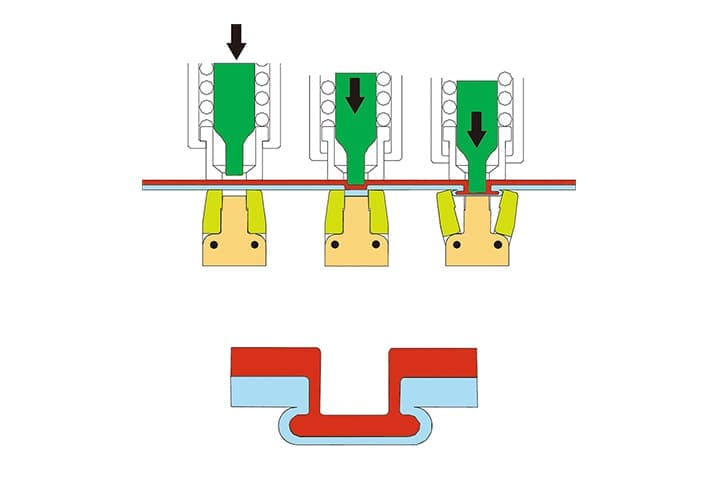
Kashime Queen®
With the two plates clamped together, pushing the punch into the die partially cuts the two plates, and pushing the punch in further widens the cut area, which serves as a retaining clip. The two plates are firmly joined through this series of simple movements.
Features
- Joining high hardness materials
- It can also be used to join stainless steel with high hardness (low ductility) and high-tensile materials, etc.
- Supports joining of materials between intermediate layers and materials with different thicknesses and properties
- Materials with intermediate layers can also be joined tightly. It is also possible to join materials with different thicknesses and ductility.
- Easy quality control
- You can easily find defects, such as distortion, dents, and scratches by checking appearance. Pass/fail judgment is obtained by measuring the diameter of the button shape formed by joining and the thickness of the bottom. This facilitates quality control.
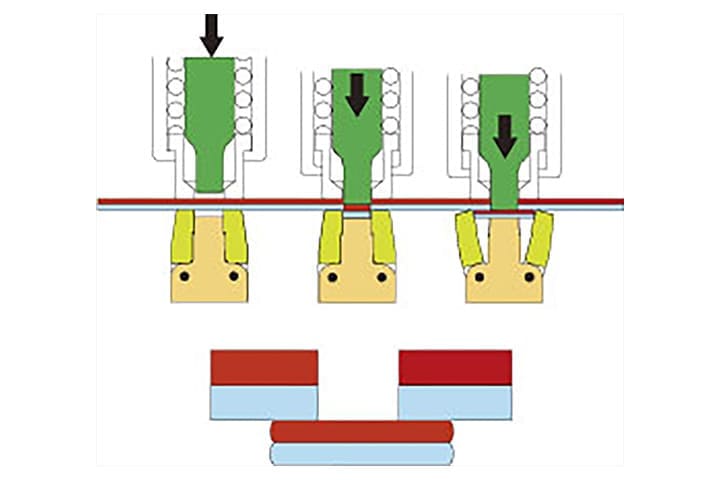
Widely Compatible
By integrating our long experience with technology and sheet metal bonding systems, we offer automated assembly lines for high-mix low-volume production lines.
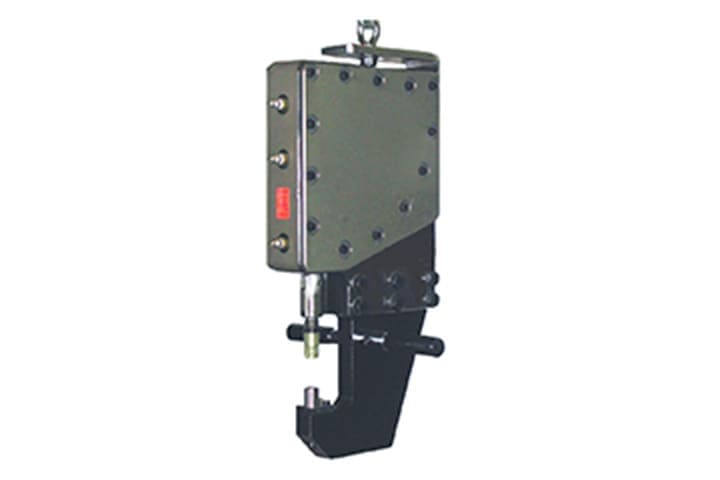
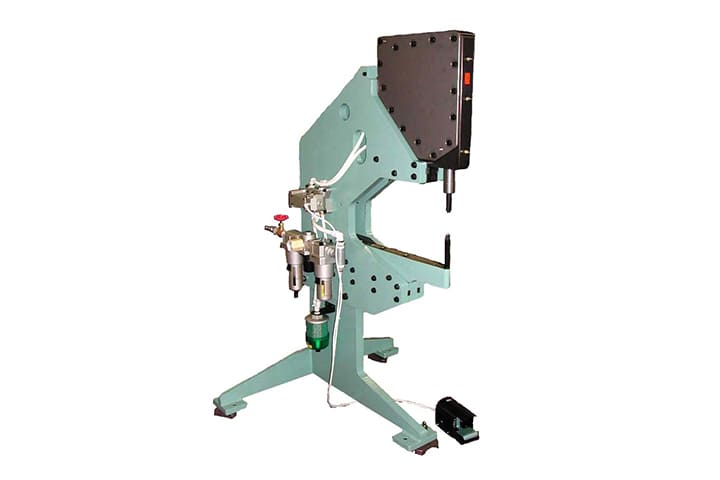
Application Example

(galvanized steel,
insulating materials)

(galvanized steel)

(galvanized steel、coated steel)

(galvanized steel)

(coated steel)

(galvanized steel)

(coated or galvanized steel)

(aluminium-plated steel)

(coated steel, stainless steel)

(airbags, locks, roof-joining, exhaust pipe cover, etc)

(airbags, locks, roof-joining, exhaust pipe cover, etc)
